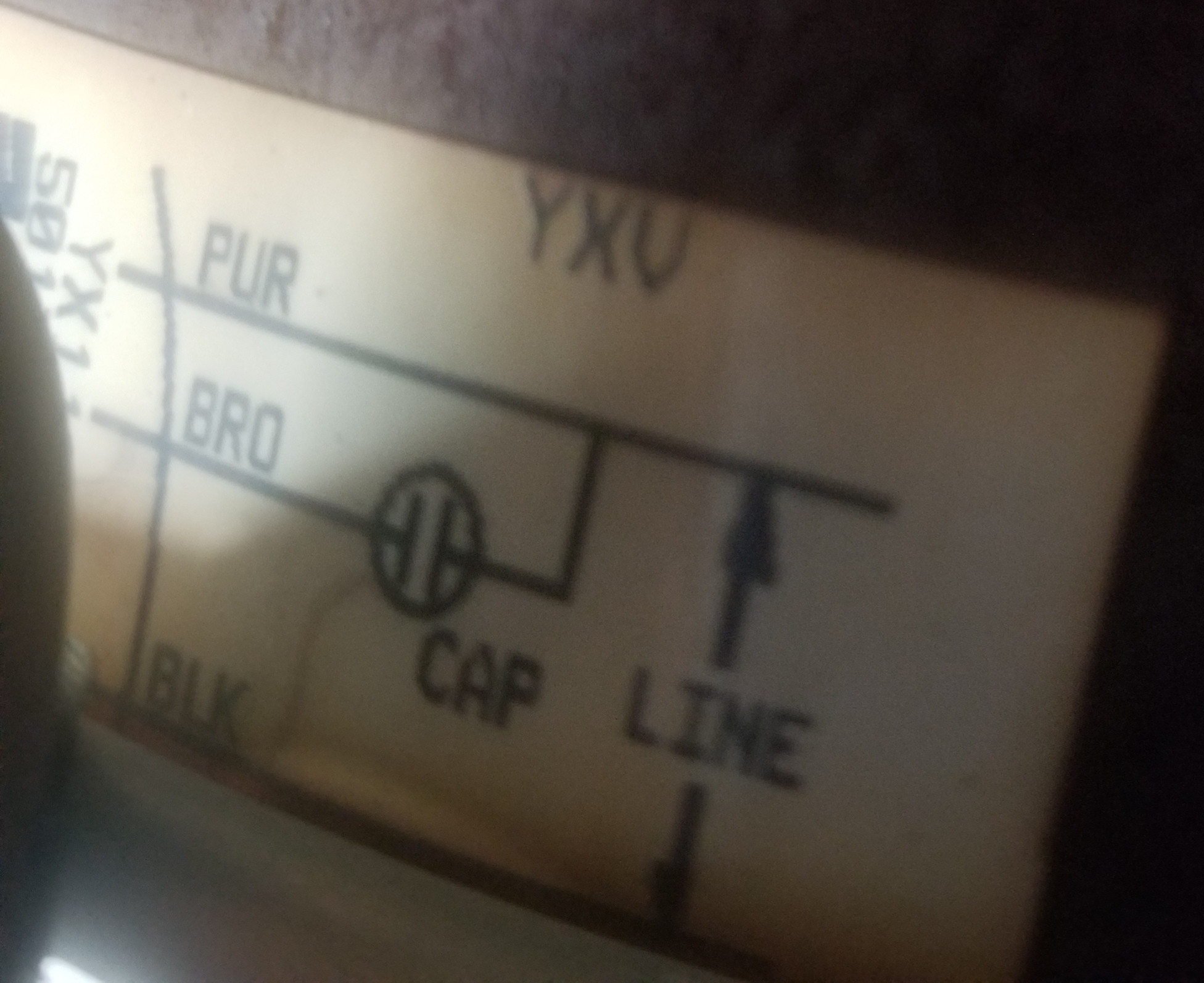Here is the wiring schematic on the motor:

How would I wire these wires safely to a plug like this:
You're not allowed to just barf a bunch of wires and call it done. The fan, I assume you scrounged this from an old air conditioner, is made to fit inside a housing, which you have removed. You need to head off to the metal press to restore two key functions of the housing: Physical protection from fan blades, and electrical protection for the wiring.
Once that is done, you can fit an appropriate cord and strain relief onto that housing.
... Since most air conditioning units hook up 240V no neutral. The motor will not like 120V because it's simply the wrong voltage. There's nothing you can do with the start capacitor to improve that.
Which means it can't be powered from 120V (unless you do some very graduate-level stuff that's way out of your depth and would be prohibitive in cost, since I assume the point here is to scrounge/be cheap). It needs to be powered from 240V, which means it needs a different type of plug.
You need a NEMA 6-15 (I presume this isn't a 3600 watt fan). This has the 2 blades rotated 90 degrees, so they are flat to each other. See #3 here
This in turn means you'll need to run a 240V circuit to your garage if you don't have one already. However they are rather useful, and let you get good deals on 240V tools on Craigslist from people who didn't know what they were buying and are now stuck with a white elephant.
The temptation for the novice cheapie is to hork this up in some non-code-compliant way. That's just dumb. Cheap is not the same as stupid. Aside from potentially killing you in the interim, the inspector will require you put it right when you sell the house, and that usually turns into an expensive fiasco because you're in a hurry to close. There are some things you don't mess with, and electrical is one of them.
This isn't really possible. First of all, almost all AC fan motors that I have seen are 240v, not 120v, so a common plug and common electrical outlet will not work.
Even if it is 120v, that diagram shows that it requires a run capacitor (CAP). That capacitor will need to be wired onto the cord, and will need to be protected by a box of some sort to prevent anyone/thing from touching the exposed terminals (which are high voltage).
You would have to step the voltage up from 120 to 240, the transformer will need to have the same or higher KVA as the motor FLA to do it with 120v. To tell the truth it would be safer just buy a fan compared to a transformer and proper wiring box for the connections and transformer.
The size of the motor (HP) is the last issue we need to look at power in the primary is approximately equal to power in the secondary your plug is a 15 amp so your max load will be 12 amps primary 6 amp secondary
Many of these fans are fractional horsepower so it can be done. But we would need to know the size of the motor to be able to identify the correct transformer.
But it may be cheaper to purchase a fan.
Such negativity. Yeah it will work, just won't blow real hard. Still a nice breeze and a lot quieter. Yeah yeah all that safety stuff. At least make sure it's grounded. Purple to neutral, black to hot(small blade). Work either way but the exposed capacitor will be less risky on the neutral side. And definitely ground it!!! Screw the green to the housing somewhere.